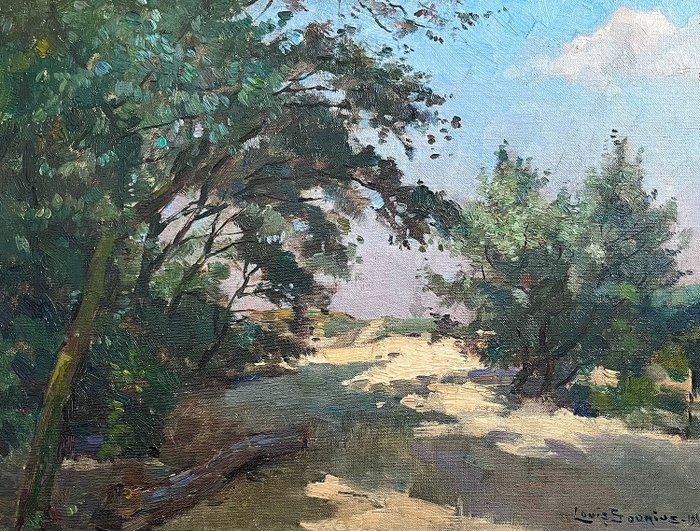
Abraham (Bram) Segaar (1888-1962) - Rietsnijder aan de Nieuwkoopse plassen
Nr. 81911623

Nr. 81911623

Lodewijk (Louis) Soonius (1883-1956) is a Dutch draughtsman and painter from The Hague, primarily known for his beach scenes depicting children at play and donkeys. Soonius grew up in a Roman Catholic family in The Hague. His father, Wilhelmus Johannes Soonius, was a vegetable grower, while his mother, Maria Amerentia Hartwig, cared full-time for the children.
His first drawings date back to 1900 when he was not yet 17 years old. In these early works, he captured the ever-changing cityscape of The Hague. That same year, he began working as a painter at the Rozenburg Pottery. The time sheets from that period bear witness to his eagerness to draw, filled with sketches of decors and interesting figures. It was at Rozenburg that Soonius met Chris Beekman, with whom he formed a friendship. Around 1905, he started his studies at the Royal Academy of Art in The Hague, where he associated with the Frisian artist Ids Wiersma. In 1913, Soonius won the Royal Subsidy for Free Painting, now known as the Royal Prize for Free Painting. This grant allowed Soonius to fully dedicate himself to painting, evidenced by his resignation from Rozenburg. Together with Chris Beekman and Aris Knikker, they rented a studio on Noorderbeekdwarsstraat, but this collaboration was short-lived due to a heated argument, the cause of which remains unknown, causing a rift between Soonius and Beekman.
After the First World War, Soonius joined the Haagsche Schetsclub, where he mainly exhibited nudes. This garnered him more recognition and brought him into contact with various art dealers who promoted his work, such as Kunsthandel Kreijns & Zoon’s at Delftschevaart 40.
In the late 1920s, Soonius faced financial difficulties, leading him to supplement his income by creating illustrations for novels published by J.N. Voorhoeve Publishers. However, the 1930s were highly productive for Soonius. He held various exhibitions, including at Kunsthandel Sena and Huize Koninginnegracht 77. His childhood drawings of The Hague were purchased in 1933 by the Association for the Preservation of Monuments, and in 1939, Soonius painted the portrait of Queen Wilhelmina for the Bataafse Petroleum Maatschappij, garnering widespread coverage in national and regional newspapers. Just before the outbreak of the Second World War, Soonius' work was featured in the exhibition "Our Art of Today" at the Rijksmuseum. In the 1950s, Soonius continued to paint until his passing in 1956.
Condition: In excellent condition. Professionally cleaned.
Frame: 33 x 41 cm
Provenance: from a private collection in The Hague, The Netherlands.
Zo koop je op Catawiki
1. Ontdek iets bijzonders
2. Plaats het hoogste bod
3. Veilig betalen